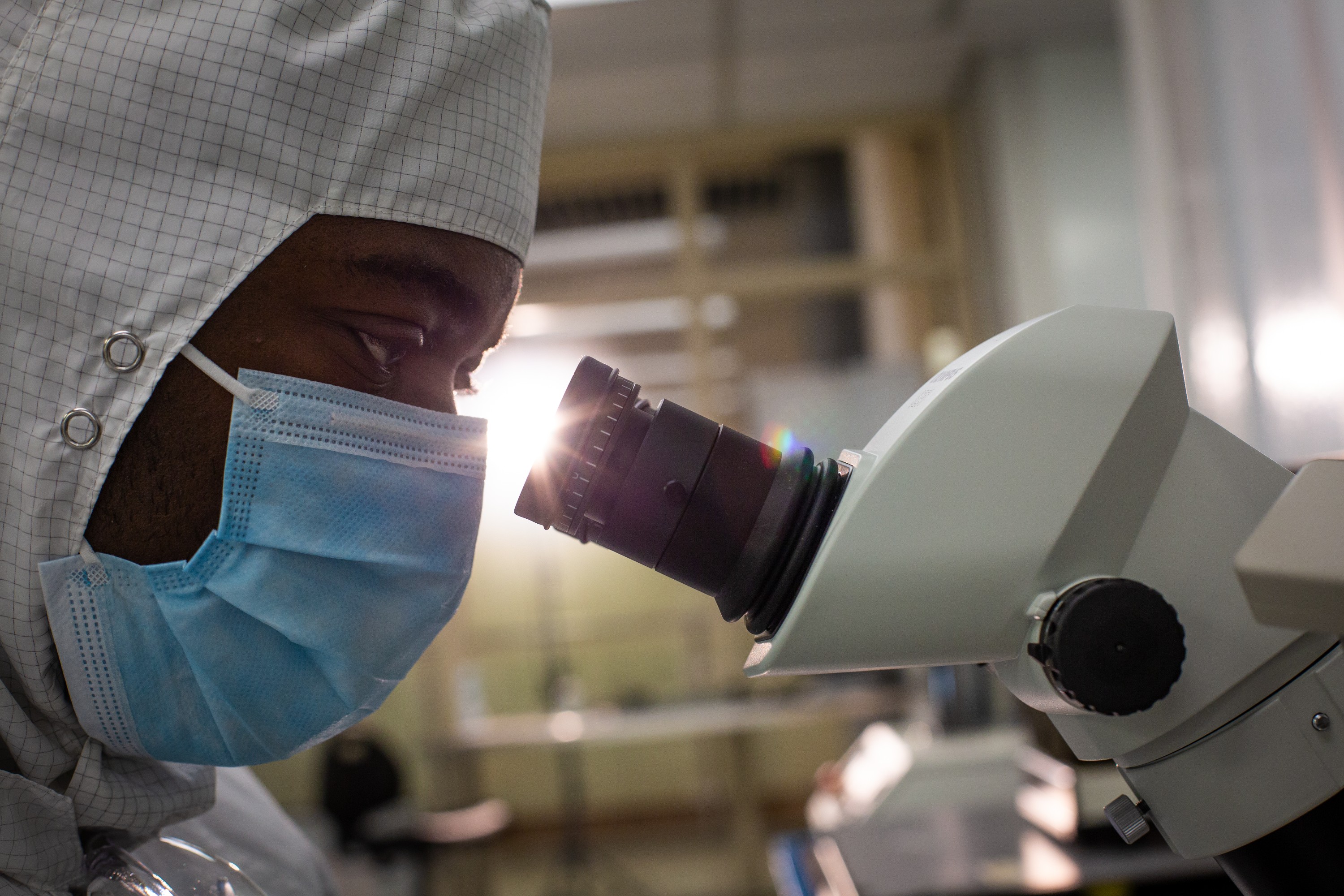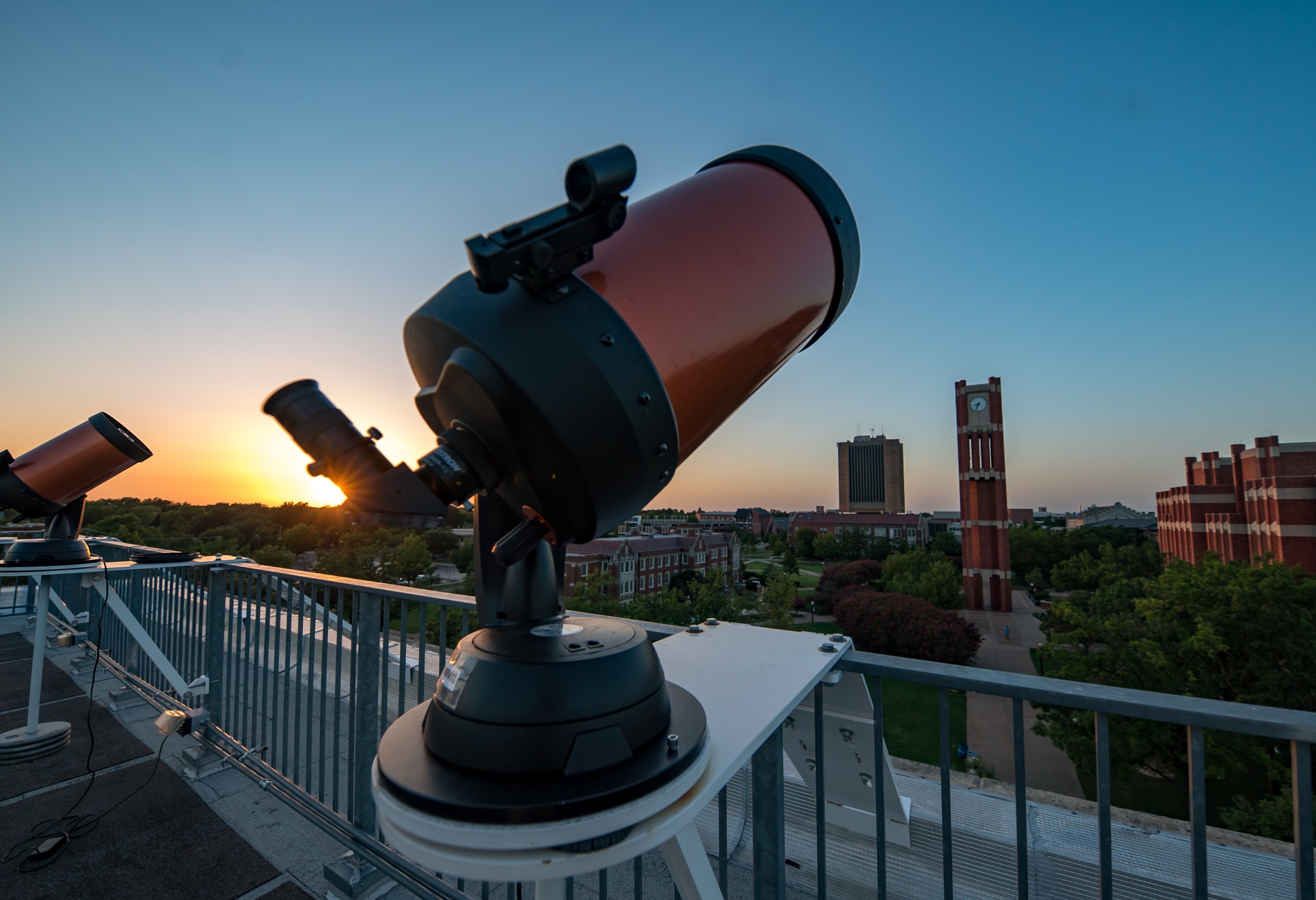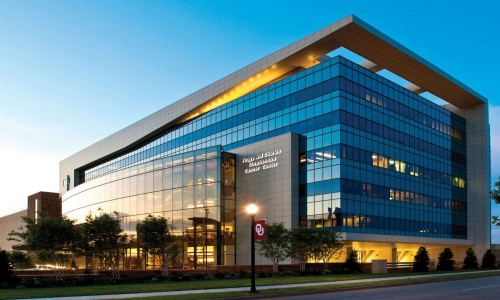Feature Story
Top 10 Research Stories
of 2018
From discovering planets to battling diabetes, see the research at OU that's changing our community and the world.

From discovering planets to battling diabetes, see the research at OU that's changing our community and the world.
Why haven't scientist discovered planets in other galaxies before now? There are no telescopes on Earth (or even science fiction for that matter) powerful enough to see galaxies more than 13 billion light years away. That didn't stop a team of OU astrophysicists from trying to peer into infinity and beyond.
They harnessed the power of analytics and an astrological phenomenon called microlensing in order to "see" beyond the milky way. Their data revealed three objects in the far reaches of another galaxy, 3.8 billion light years away, ranging from the mass of the Moon to the mass of Jupiter. Their work provides us with the first evidence of planets in other galaxies.

The Center for Disease Control and Prevention has labeled the bacterium, Pseudomonas aeruginosa, an urgent threat. Infections from this multi-drug resistant pathogen usually occur in the most vulnerable populations, like hospital patients or anyone with weakened immune systems. Infections can lead to severe illness and even death.
Pseudomonas is usually treated with an antibiotic, but the infections are becoming more and more difficult to treat because of increasing antibiotic resistance. OU professors are addressing this challenge and critical need for new antibiotics that can fight Pseudomonas and accelerate antibiotic discovery. The OU team received a five-year, $5.7 million grant from the National Institutes of Health to develop new, more effective approaches to treat multi-drug resistant bacterium.

The future of weather forecasting depends on the continued development of advanced radar. OU’s Advanced Radar Research Center team is developing the fastest, most advanced radar in the nation and its name is HORUS. HORUS can scan the atmosphere in 30 seconds or less and distinguish between snowflakes, raindrops, hail stones or other targets within a storm. Rapid scans of the atmosphere are critical for improving forecasting and prediction, giving people more lead time in dangerous weather.
The project is funded by a $3.4 and $3.1 million SENSR grant from the National Oceanic and Atmospheric Administration.
An OU professor, Jizhong Zhou, and his team have completed a new study on the effects of climate warming on soil microbes in a long-term climate change experiment of a tallgrass prairie ecosystem. They collaborated with researchers from across the country and the world on the first study to demonstrate that climate warming plays an important role in accelerating temporal turnover rates of soil bacterial and fungal communities. This phenomenon is critical for predicting ecological consequences of future climate change.

As our climate changes, researchers race to study the long-term impact it will have. A University of Oklahoma meteorologist, Elinor R. Martin, looks at both severe drought and rain events, but it is the first time extended heavy rain events have been studied.
She expects severe drought and long-lasting rainfall events to worsen in the future. In Martin’s new study just published, she determines how frequent, intense and long lasting these types of events will be in the future. She refers to the May 2015 rain event in Oklahoma and Texas as one example of what could be expected in the future.
Oklahoma Geological Survey State Seismologist Jake Walter and University of Oklahoma Mewbourne College of Earth and Energy Assistant Professor Nori Nakata are collaborating on a $25 million research project to study a remote Antarctic glacier and how its collapse could significantly affect global sea levels.


The Stephenson Cancer Center celebrated its prestigious NCI designation this year, which puts it among the top two percent of cancer centers in the country. As a result of the designation, Oklahoma's leading cancer research organization will have access to new drugs for patients, new treatment options and clinical trials offered only at NCI-Designated Cancer Centers.
The Stephenson Cancer Center also will be able to apply for federal research grants available only to NCI-Designated Cancer Centers, potentially bringing millions of dollars in additional funding to Oklahoma. The designation already includes a five-year, $10.1 million grant that will support research programs and infrastructure, recruitment of top academic researchers, and community outreach.
Diabetes is epidemic in Oklahoma. One in three residents of our state is either diabetic or prediabetic. Thanks to a $34 million dollar gift from The Harold Hamm Foundation, the HHDC is helping lead the way in prevention, treatment, research and ultimately finding the cure for diabetes.
Today, the HHDC is one of the top comprehensive centers in the United States. There is an intense focus on multi-disciplinary research and the center is also celebrated for unparalleled patient care and the prevention of all types of diabetes. The $34 million dollar gift will be allocated over the next 10 years to fund research, talent and technology.
This study will inform the design of next-generation pre-K programs. Thanks to a $2.7 million award from the National Institutes of Health, researchers will be able to follow the participants who are now in kindergarten for 5 years (until 2023). With the study’s long-term focus and depth, it is among the most comprehensive contemporary studies of public pre-K and children's outcomes through elementary school. Findings will hopefully reduce the universal public health threat posed by poverty and economic insecurity related to young children’s optimal development.
As diabetes rates soar, an OU researcher and activist developed a unique approach to study and fight the diabetes epidemic. She used community-based participatory research to conduct healthy food interventions at tribally owned convenience stores in Oklahoma. The study found that Native peoples’ purchasing of vegetables and fruits increased significantly at intervention stores, and perception of food environment improved dramatically as well. Plus, these results came at no cost to the tribes. In fact, the intervention stores generated more revenue than the control stores.
The study became policy in one of the tribes, and other nations are exploring replicating it. With more than 560 federally recognized tribes and more than 300 tribally-owned convenience stores, there is a huge opportunity to expand.
